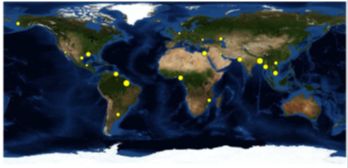Transboundary Water Assessment Programme (TWAP)
Delta Alliance was asked in 2012 by the GEF (Global Environmental Facility) funded Transboundary Water Assessment Programme (TWAP) to join the programme and to elaborate a global assessment of (transboundary) deltas. TWAP seeks to develop methodologies for conducting a global assessment of transboundary water systems and to catalyse a partnership and arrangements for conducting such a global assessment. River basins constitute one of the water systems analysed in this programme, and may include deltas, occurring where a river flows into a lake or into the sea. The physical geography of deltas often strongly differs from the neighbouring parts of the river basin, in terms of relief, subsurface characteristics and hydrology. Deltas often host important population numbers, agricultural production areas and economic activities. For these reasons, it is felt that deltas need special attention in the TWAP river basin assessment. The Delta Alliance has developed a methodology (pdf) for this project.
Building on the approach which was applied in the Delta Alliance-project Comparative assessment of 10 deltas, an assessment was done, based on the following four indicators (addressing main delta threats): delta drowning risk indicator, wetland ecosystems indicator, salinization indicator, delta governance indicator, population pressure indicator.
The project started in early 2013 with the selection (pdf) of 26 out of 84 important deltas of transboundary river basins. The first preliminary results for these 26 deltas for the above mentioned indicators have been delivered in the course 2013. Further detailed assessment of the indicators and the final determination of the Delta Vulnerability Index took place in 2014. The final report you can find here.

Figure 1: Global distribution of the selected deltas. The size of the
yellow dots indicate the relative surface area of the delineated deltas.